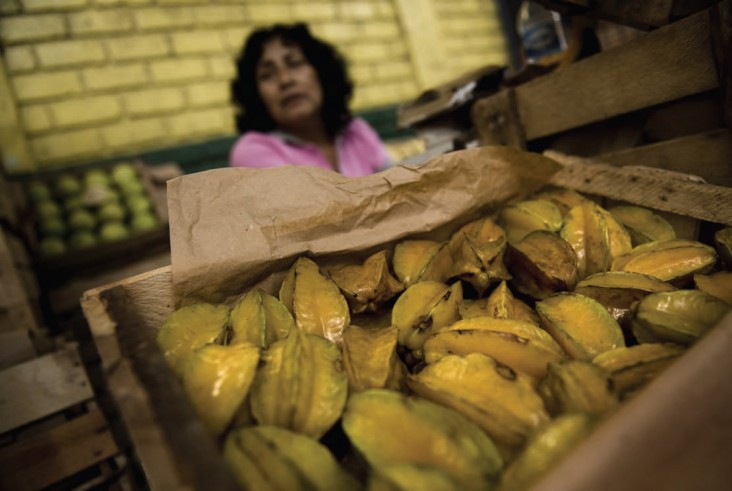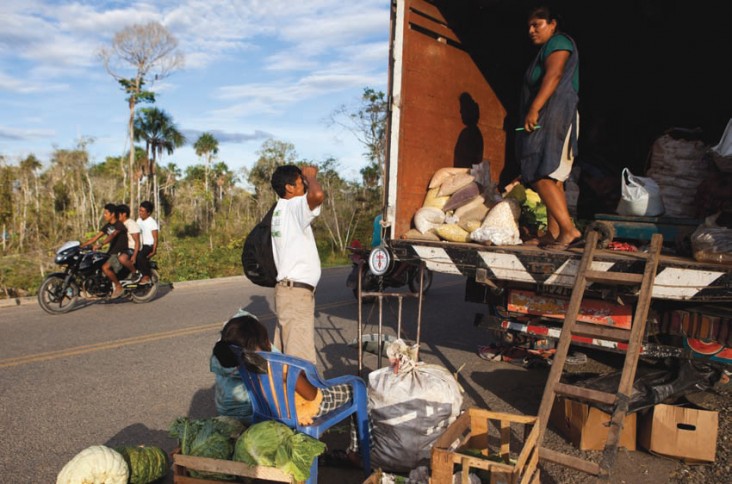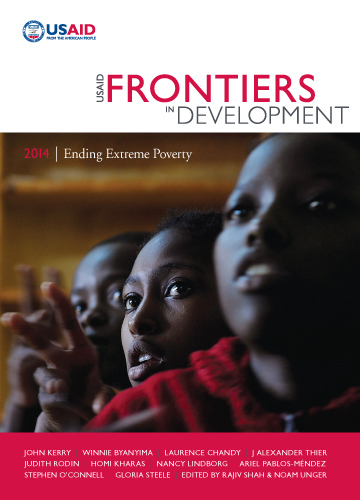Joshua Templeton
Peru was a desperately poor country as recently as 1990. Ravaged by civil war and hyperinflation, food consumption had fallen below 1,950 calories per capita, and public sector wages had dipped to $39 per month.1
Macroeconomic stabilization in the early 1990s, followed by political reforms in the early 2000s, set the stage for improved economic growth. Yet this growth was disproportionately concentrated in the capital, leaving out Peru’s poorest regions. In 2004, 20 percent of Peru’s population remained extremely poor,2 and it began to look as if Peru might become a case study for economic growth without poverty reduction. But, as growth spread to the highlands, extreme poverty fell to 11.2 percent by 2007 and 6 percent by 2012.3 Inequality, as measured by the Gini coefficient, also fell.
How did Peru achieve such a dramatic transformation? Three efforts were key to Peru’s inclusive economic growth: infrastructure investment, particularly investments to improve the rural transportation network;4 economic stimulation of market systems in poor regions;5 and Juntos, a well-designed conditional cash transfer program.6 Largely thanks to these efforts, coastal prosperity spread to the country’s impoverished interior.
USAID helped Peru fight poverty on two of these fronts, roads and market systems, by identifying market and government failures that the Agency was well positioned to tackle. USAID’s contributions were small compared to efforts by the Government of Peru and the private sector, yet they nevertheless reflected the potential of catalytic interventions in reducing poverty.

An innovative approach to financing infrastructure
Peru has had remarkable success improving rural access to markets. From 2001 to 2011, the country cut average travel times from 176 of the poorest rural districts to the nearest city by more than half. Districts with these improvements reported rising market prices of both agricultural land (up 88 percent) and housing (up 16 percent).7 Day labor incomes, adjusted for inflation, rose 73 percent. Rural roads also improved access to health and education services.
Public investment in the transportation sector increased from 5 percent of the federal budget in 2000 to 14 percent in 2010. Yet Peru’s successes depended as much on public-sector innovation as they did on increased funding.8
These innovations included build-operate-transfer (BOT) concessions. Under a BOT concession, the government gives a private company a permit to build, operate and maintain specific infrastructure, such as a road or port. For a defined number of years, the private company charges road tolls or port fees to repay its loans and earn a profit. At the end of the concession agreement, the company transfers ownership and operation of the infrastructure facility to the government.9
BOT concessions align political incentives with the public interest more effectively than either government ownership or privatization.10 Previously, the Government of Peru tended to build roads to garner voter support and it neglected road maintenance, even though maintenance tends to be more cost-effective than rebuilding roads over time. Instead, BOT concessions incentivize the private sector to include maintenance as part of their contracts. The better the roads, the more likely toll-paying drivers will be to use them.
Privatization, however, creates another set of incentive problems. Instead of focusing the sale on the long-term public interest, governments often try to achieve the highest possible sale price with offers to the private owner such as monopoly pricing power. In contrast, BOT concessions offer the benefits of privatization—increased investment in infrastructure, specialized technical competency and elimination of the drain on public funds–without generating immediate public funding windfalls. Since no funds change hands between the government and the private entity under a typical BOT concession, the government has no incentives to sell out future consumers for an immediate payout, as has been alleged in past Peruvian privatizations. Instead, future governments benefit from the BOT when the infrastructure facility is transferred to government control.
Successful design of these concession arrangements requires complex economic, legal and engineering expertise. In fact, the Government of Peru decided to concede 11 roads in 1995, but did not actually concede any roads until 2002 because of a lack of technical expertise.
In 2003, USAID began to help the Government of Peru design concessions for two highways connecting the coast with the impoverished interior as well as design an upgrade to the country’s most important port. USAID’s technical assistance also helped the government design contract terms and engineering studies that reduced project risk, resulting in two concessions that attracted private-sector bidding.
USAID invested just $8 million in this activity. Yet the three successful concessions stimulated more than $800 million in private investment for infrastructure.11 The infrastructure built with this investment opened up markets to the interior of the country and played a key role in Peru’s recent economic growth.12 It also likely helped to reduce poverty, although knowing exactly how much is difficult to determine in light of the many other factors affecting poverty reduction. We have not evaluated whether the roads and port would have been built without USAID assistance, and at what cost. This represents one example of a project where the full impacts and attribution may be difficult to measure, but one that USAID will need to pursue in order to influence national poverty rates.

Brokering market linkages
Peru drastically liberalized trade over the past 20 years through numerous bilateral free trade agreements, joining the Asia-Pacific Economic Cooperation and founding the Pacific Alliance with Chile, Colombia and Mexico. However, the informal firms for which Peru’s poorest people are most likely to work13 are seldom equipped to insert themselves into the supply chains that benefit from such agreements.
Why do buyers, such as exporters or grocery stores, purchase from large national suppliers rather than the small local suppliers found in Peru’s poorer regions? In many cases, lack of trust, rather than economies of scale or transaction costs, is the crucial market failure.14 Buyers suspect that small suppliers will fail to live up to their quality or quantity commitments. Meanwhile, small suppliers fear being exploited by large buyers. The government, with its own political interests, is not well positioned to step into the role of honest broker. Likewise, it is unreasonable to expect a buyer and a seller to pay a private consultant to help them trust each other.
In this context, USAID is well positioned to serve as an honest broker. Instead of helping suppliers improve production of goods for which there may not be a market, which many development projects have done in the past, USAID’s Poverty Reduction and Alleviation (PRA) program first helped suppliers identify potential buyers. From there, PRA identified technical constraints, provided modest technical assistance or equipment to pave the way toward new business transactions, and acted as an honest broker for a sale.
PRA saw the win-win potential for a partnership between Piscifactoría de los Andes, a trout processing company in Huancayo, Peru, and SAIS Tupac Amaru, a large farm nearby. Piscifactoría had the capacity to sell up to three times more fish than what its own ponds produced, but it doubted that SAIS and other local farms could provide quality fish. SAIS had been unable to maintain production of its once high-quality trout and did not trust Piscifactoría as a business partner. Yet a partnership could help Piscifactoría expand its operations and bring much-needed investments and jobs to SAIS.
PRA worked as a mediator to help both groups see the value of a potential relationship. As a result of this brokering, Piscifactoría invested $70,000 in the rehabilitation of SAIS’s ponds and improved its ability to meet market quality demands. SAIS enhanced its production to Piscifactoría’s specifications and became a reliable supplier. The approach was profitable for Piscifactoría, enabling the company to turn to additional local suppliers, expand sales by $5.8 million and create 550 jobs.15
The PRA benefited local Peruvians in many ways. Contracts brokered in Huancayo and elsewhere increased the incomes of suppliers, many of whom live near Peru’s poverty line. The work involved in meeting these contracts required additional hired labor. This resulted in improved opportunities for unskilled workers and lifted some above the World Bank’s extreme poverty line. In some cases, PRA also demonstrated the viability of products not previously produced in the region, such as quinoa or artichokes, opening new markets and attracting imitator firms. Finally, workers and suppliers spent their new earnings in the local economy, benefiting entire communities.
USAID funding for PRA ended in 2013, partly as a reflection of the Agency’s move away from economic growth programming. Although PRA was not rigorously evaluated, what it left behind is promising: local market actors better connected to each other and to external buyers, increasing local production, generating jobs and investing locally. In fact, between 2000 and 2007, 1,500 microenterprises and 37,500 individual producers participated in transactions facilitated by PRA, generating $232 million in sales.16 PRA’s role as facilitator paved the way for business relationships that continue to benefit Peruvians.
Conclusion
Peru’s reduction in extreme poverty over the past eight years can be attributed to both economic growth and targeted efforts to ensure that the poor shared in this growth. Before 2003, Peruvian markets and governments failed to connect the country’s impoverished interior to its increasingly prosperous coast. USAID helped address this failure by helping the government design infrastructure concessions and helping small producers connect to markets for their goods. These are no doubt small contributions to the much broader economic growth process. Nevertheless, they are contributions worth learning from and replicating, as they reflect ways that USAID can help catalyze local resources and networks for development.
Joshua Templeton recently completed four years as a mission economist for USAID/Peru and is now USAID’s regional economist for Southeast Asia. The views expressed in this essay are his own and do not necessarily represent the views of the United States Agency for International Development or the United States Government.
1 Cuanto. 1991 Ajuste y Economía Familiar 1985–1990. Lima: Cuanto.
2 World Bank, 2004 “Peru Poverty Assessment.” http://web.worldbank.org/WBSITE/EXTERNAL/COUNTRIES/LACEXT/0,,contentMDK:20862551~pagePK:146736~piPK:146830~theSitePK:258554,00.html
3 Instituto Nacional de Estadistica y Informatica. http://www.inei.gob.pe/estadisticas/indice-tematico/sociales/
4 Webb, Richard. “Conexión y Despegue Rural,” Instituto del Perú, Universidad San Martín de Porres, Lima, 2013.
5 Riordan, James. We Do Know How: A Buyer-Led Approach to Creating Jobs for the Poor. 2011.
6 Elizaveta Perova and Renos Vakis. “Welfare impacts of the “Juntos” Program in Peru: Evidence from a non-experimental evaluation.” World Bank, 2009.
7 Unless otherwise noted, all the data on roads are from Webb, Richard. “Conexión y Despegue Rural,” Instituto del Perú, Universidad San Martín de Porres, Lima, 2013.
8 Data on government spending is from the World Bank’s Gasto para Resultados: Revisión del Gasto Público para Perú. June 2012.
9 United Nations. “Best Practices in Investment for Development.” 2009. http://unctad.org/en/docs/diaepcb20092_en.pdf
10 Larry D. Qiu, Susheng Wang, “BOT projects: Incentives and efficiency,” Journal of Development Economics, Volume 94, Issue 1, January 2011, pp. 127-138.
11 Fox, James. “Peru Concessions: The Overall Approach.” 2007. http://www.energytoolbox.org/library/peru_transportation_concessions/ peru_usaid/Peru_Concessions_The_Overall_Approach.htm
12 Webb, Richard. “Conexión y Despegue Rural,” Instituto del Perú, Universidad San Martín de Porres, Lima, 2013.
13 Japan Bank for International Cooperation. “Poverty Profile: Peru.” 2007.
14 Riordan, James. We Do Know How: A Buyer-Led Approach to Creating Jobs for the Poor. 2011.
15 Riordan, James. “One Buyer at a Time.” Stanford Social Innovation Review. Winter 2007.
16 Weidemann Associates, Inc. Final Evaluation of USAID/PERU Poverty Reduction and Alleviation (PRA) Activity. 2008. http://pdf.usaid.gov/pdf_docs/PDACN110.pdf
Frontiers in Development
Section 3: Catalyzing Growth and Investment








Comment
Make a general inquiry or suggest an improvement.